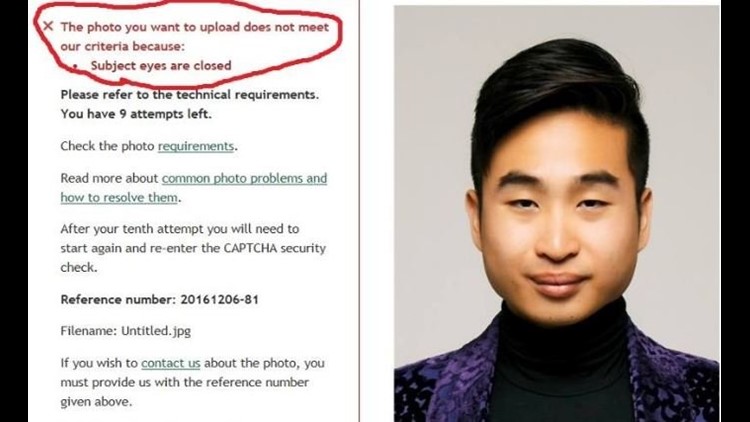It’s a common annoyance, you’re filling out a form online and you get some error.
New Zealander Richard Lee was applying for a passport online when the system objected to the image he uploaded.
“The photo you want to upload does not meet our criteria because: subject eyes are closed,” it said.
Lee, who is of Asian descent, had his eyes open.
“I fell off my chair laughing,” he told CNN. “Like, I know I have small eyes and I have no problem with it. But the fact that a computer can notice as well, that’s just hilarious.”
After trying three more images, he phoned the passport office to ask for help.
“They said it was the shadow in my eyes and the uneven lighting on the face makes it hard for the software to process,” he said.
A New Zealand Department of Internal Affairs spokesman denied their system discriminated against “any specific set of individuals.”
He added that up to 20 perecnt of photos submitted online are rejected for a variety of reasons — most commonly shadows on the face which the software interprets as closed eyes.
“That was the generic error message sent in this case,” Internal Affairs spokesman Steve Corbett said. “We… note that in this case another photo was submitted on the same day and the individual was issued a New Zealand passport.”
Passport problems
Lee – currently attending university in Melbourne, Australia – eventually gave up and went to a local post office to get some passport photos taken.
“Fortunately one of those worked,” he said.
This wouldn’t be the first time an automated system has had problem with non-white faces.
In 2010, Taiwanese-American blogger Joz Wang was shocked when her digital camera kept asking “did someone blink?” on photos of her, while a year before black users complained of HP webcams not being able to detect their faces.
“(I’m) actually quite impressed that in the past 80 years we’ve gone from Turning machines to this software that can read a human face,” Lee said.
Some faces, at least.



